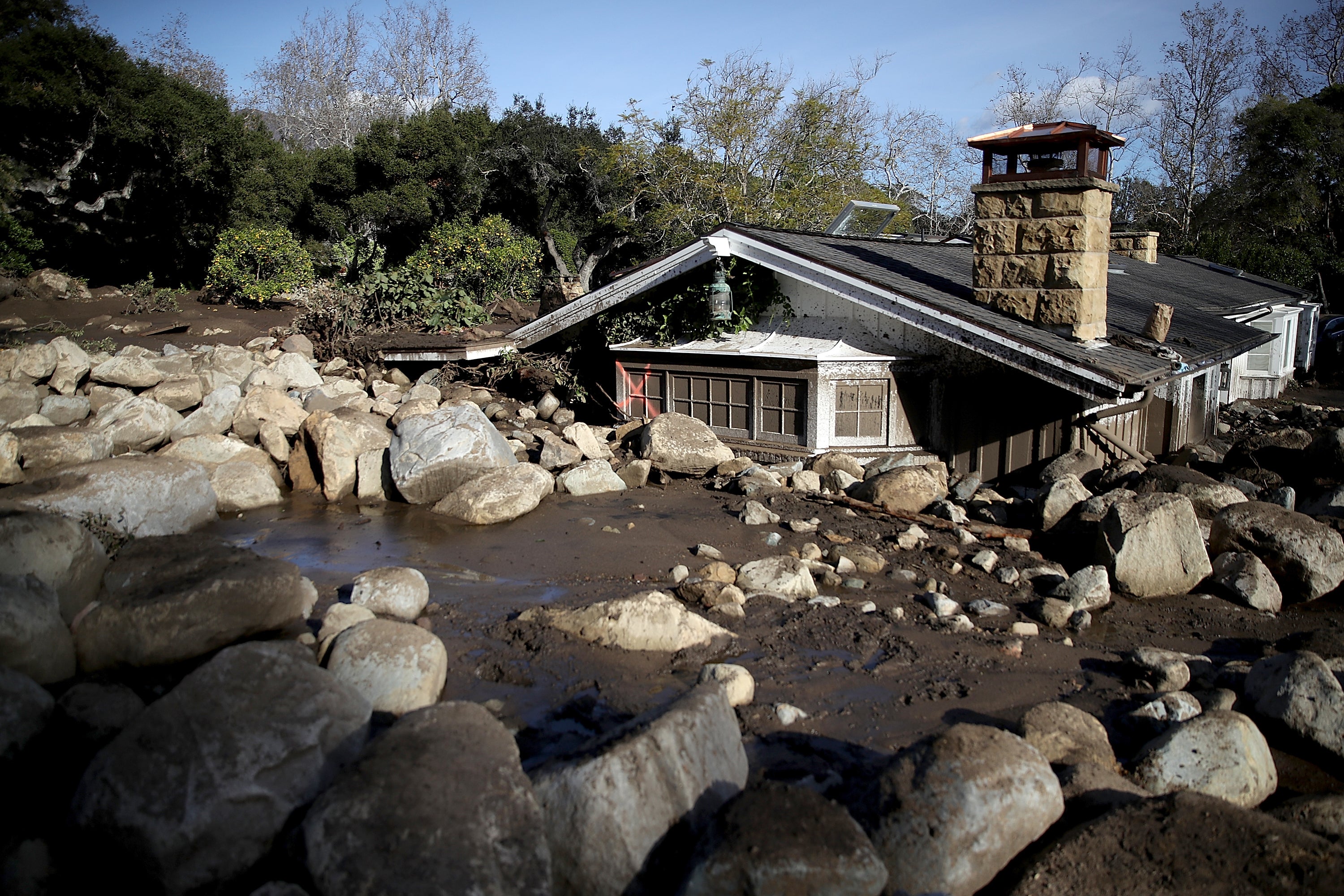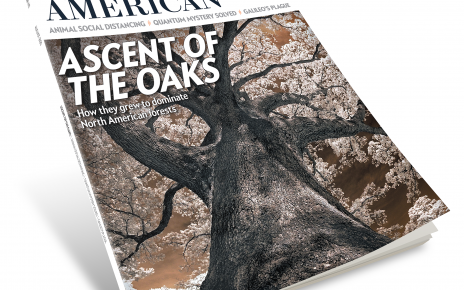
Editor’s Note (1/10/23): This story is being republished because the town of Montecito, Calif., was evacuated on Monday following concerns that torrential rains from atmospheric river storms might trigger deadly mudslides in the burn scar of the Thomas Fire like those that happened exactly five years prior.
At 3:30 A.M. on January 9, 2018, half an inch of rain poured down on the charred slopes of the Santa Ynez Mountains in coastal southern California. The flames of the Thomas Fire—at the time the largest wildfire in state history—had swept through the previous month, leaving the soil and vegetation scorched and unable to soak up the onslaught of water. The destabilized ground gave way in a devastating landslide. Boulders crashed into houses in the town of Montecito, Calif., and a highway was buried under several feet of mud. The disaster killed 23 people and caused an estimate of around $200 million in damage.
Climate scientist Samantha Stevenson had only recently moved to the state to start a new job at the University of California, Santa Barbara. “It was pretty shocking to see, as someone who had just arrived in California,” she says. “It kind of got stuck in my head.”
When Stevenson and Danielle Touma, then a postdoctoral researcher at U.C. Santa Barbara, were casting around for research ideas a couple of years later, the memory of the landslide prompted them to investigate whether extreme rains may become more likely to follow major wildfires as the climate changes. Their work, published on Friday in Science Advances, found that by the end of this century most wildfires in in large parts of the West would be followed by several extreme rain events within five years. This would carry major risks of landslides and flash floods.
And these risks are not confined to decades in the future: the study showed the odds of this type of compound event occurring have already risen across the West. “We’re starting to see these types of things happen with our own eyes,” Stevenson says.
Climate scientists combine historical data with computer models to look for trends in how the severity and frequency of extreme weather events have already changed and how they will continue to do so in the future. These efforts have already made it clear that wildfires in the western U.S. will likely become more intense and burn larger areas and that heavy downpours are likely to get more frequent and intense.
But such events “don’t just happen in isolation,” Stevenson says. When they combine—like the heavy rains did with the Thomas Fire burn scar in 2018—they can cause dramatically more damage to communities than one of the events alone.
By their nature, though, such extreme combined events have been relatively rare. This means there is often not enough historical data to see any trends in how these events are changing as global temperatures rise. “As climate scientists, many people in the community would ask us, ‘Are these going to get worse?’” Touma says. Before her and Stevenson’s new study, “we couldn’t really give them a complete answer in terms of these compound events.”
To investigate the question, Touma, Stevenson and their co-authors turned to newly available data from climate models run many, many times, which together provided enough scenarios for scientists to pick out trends in this type of extreme weather. “We have more data now than we ever had before,” Stevenson says. “So we can start saying quantitative things about these kind of rare events.”
The researchers found that, by 2100, more than 90 percent of wildfires in California, Colorado and the Pacific Northwest will be followed by at least three extreme rainfall events within five years. The number of fires followed by a rainfall within just one year—when landslide risks are higher—is set to double in California by century’s end. In the Pacific Northwest, that number is projected to increase by 700 percent, driven by the large increase in expected extreme rain events, Touma says. “We were expecting to see a signal,” Stevenson says, but the sheer increase in magnitude was “just so stark.” The overall result “wasn’t surprising,” she adds. “But it was pretty sobering.”
And such concerns will become relevant long before the end of the century. There are significant increases in the likelihood of heavy rains following fires even by 2050, Touma says. This finding provides insights into how risks could change if greenhouse gas emissions are curtailed and warming is kept to lower levels. (The models the team used assumed a worst-case emissions scenario, with relatively high levels of warming by 2100.)
“Overall these types of studies are important just to raise attention for these newly emerging complex climate risks that we are increasingly seeing,” says Columbia University climate scientist Kai Kornhuber, who was not involved in the new paper. “I’m sure we’re going to see more of such studies.”
Stevenson and Touma say they hope their research will help inform emergency management preparation and community adaptation. In response to the Marshall Fire that destroyed more than 1,000 homes in Boulder County, Colorado, last December, officials are providing residents with resources to clear debris from the area in preparation for spring rains, says Touma, who is now a postdoctoral fellow at the National Center for Atmospheric Research in Boulder, Colo. The day after the Marshall Fire ignited, a major snowstorm fell—which helped extinguish the flames. But in a warmer future, that snow may have fallen as rain, potentially compounding the devastation. “We’re not going to prevent” such events, Stevenson says, so “we need to be prepared.”



